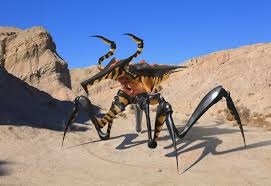Oh boy, another topic I find intriguing when out adventuring.
Bugs don't bother me much, whether camping or in urban environments. I find them intriguing, actually, so keep a good general field guide for insects with me on adventures to learn about the more exotic bugs I run across. I like the
Kaufman's Field Guide to Insects of North America the most, so far, though sometimes get more localized info when I can.
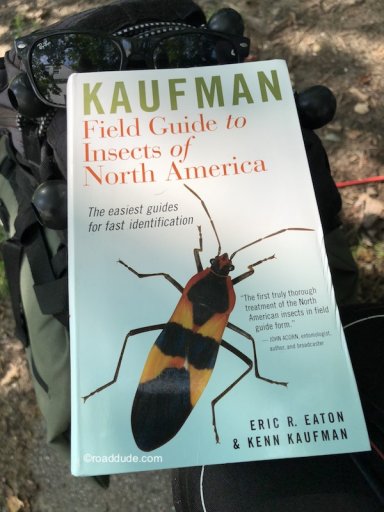
I often pack this for hikes, bike rides (as above) and canoe paddles, as well as keep it handy in camp.
Here's a mess of images I've made in my travels of insects and arthropods:
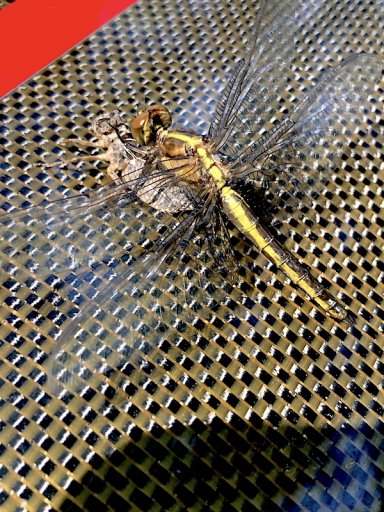
Dragonfly emerging from its nymph shell and drying its wings before its first flight. New Hampshire, 2019
Various arthropods--characterized by exoskeleton, segmented bodies, jointed limbs, and generally go through a molting stage--seem to favor my canoe as a resting place to emerge from their nymph stage. This was on the outside of my canoe, which I would've thought would be too slick.
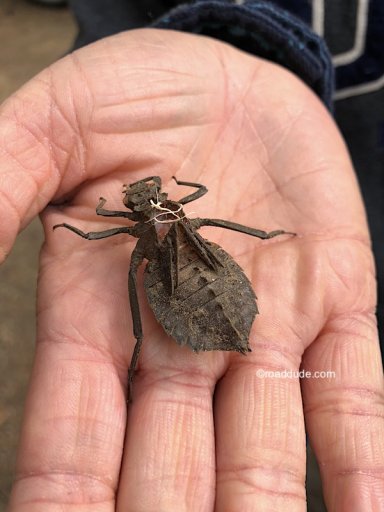
Dragonfly nymph shell after it has emerged. You can see the wing shapes and how folded they were before molting. The white string-like things are umbilicals of sorts.
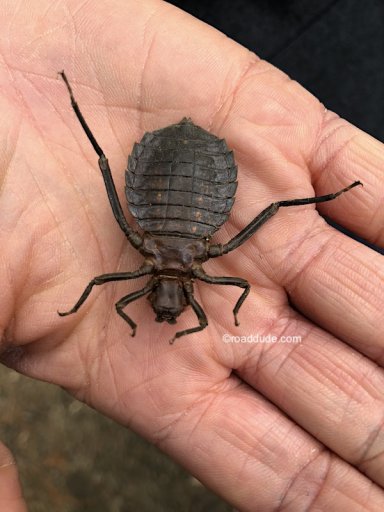
Underside of dragonfly nymph shell
.
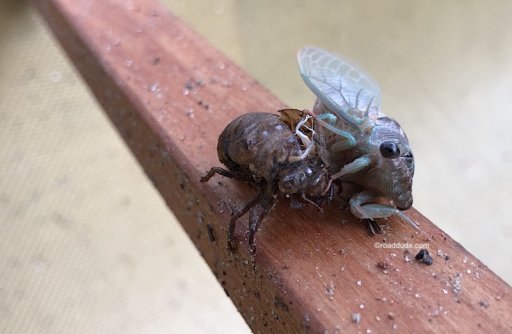
Cicada-like arthropod emerging from nymph stage, having split the upper back of the shell. This was on one of the thwarts of my canoe.
.

I watched this scorpion for the longest time at the edge of a camp I had in the Chihuahuan Desert before I realized he was not eating, but struggling to shed its skin after just having molted.
Just like lobster and crawdads, other arthropods like vinagroons and scorpions will seek various nooks and crannies in which to molt. They will hide until their new skin dries and hardens sufficiently and they become less vulnerable to predators.
It's a good reason why one should shake out tarps and other items when camping.
.
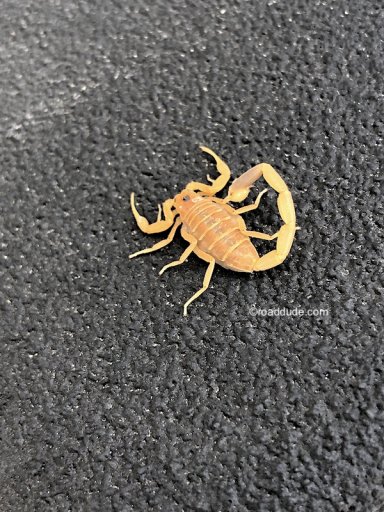
Another scorpion in camp.
This one was wandering around on the fender of my trailer.
A very short vid of it scurrying away, trying to avoid me:
.
Another vid, 34secs, of a scorpion I discovered on my trailer just after it had eaten and disassembled a spider:
.
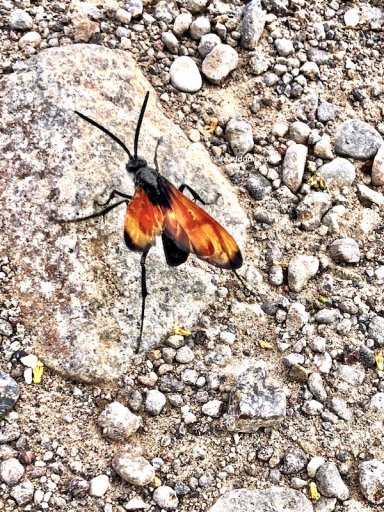
This guy is fascinating. It's a Tarantula Hawk. Here's how the Texas A&M Dept of Entomology describes them:
"Tarantula hawks are one of the largest species of wasps in Texas. They sting tarantulas, bury them in holes in the ground and lay eggs on them. The larvae of the wasp then feeds on the tarantula. These large wasps are bright metallic blue-black in color with red wings. They are generally quite harmless to humans because they seldom sting. They can be provoked though and should be left alone."
A very short vid of the Tarantula Hawk above, made while talking with a river guide along the Mexican border. We were talking about how many insects and arthropods etc come around camp in the dark and that when you shine a light their way you can see a glint from their eyes even through brush, though it's difficult to tell how large they are or what it is. After a while, you get better at determining what kind of critter it is by the spacing and movement of just the glint.
.
And this is a short vid of a beetle that landed on my knee while I was talking to 'DJ from PA' about building and construction. He's a fellow van guy I met along the border and camped with in various places for a few weeks. You can often get a better and clearer view of small critters with your phone than you can with just your eyes.
.
But by far, the most interesting crawling critter I've ever run across was in the borderlands late one night in 2017. It was preying upon the number of flying ants and other insects that were attracted to the rock lights under my trailer. When I shone my light on her, she reared back and spread her forelegs as if to say "Yo dude, quit harshing my vibe!"
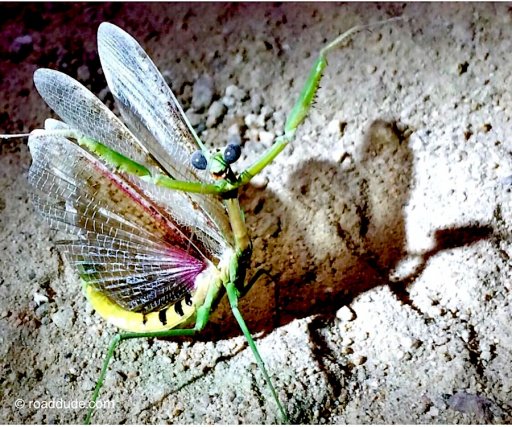 Iris oratoria - or Mediterranean Mantis
Iris oratoria - or Mediterranean Mantis: non-native.
Introduced, probably accidentally, into California in the 1930s, then spread through the southwest US.
Known for it's deimatic display when threatened, in which it:
"...sets in motion a complex series of actions which combine to form a startling deimatic display. The mantis turns to face the aggressor, rears up by arching its back, curls its abdomen upwards (dorsiflexion), raises and waves its forelimbs, raises its wings to displays the large brightly coloured eyespots on the hindwings, and stridulates by scraping the edge of its hindwings against its tegmina, the leathery front wings" says Frederick Prete in his book The Praying Mantids.
I wish I'd had my camera set up for vid and used it, not just my phone.
.




